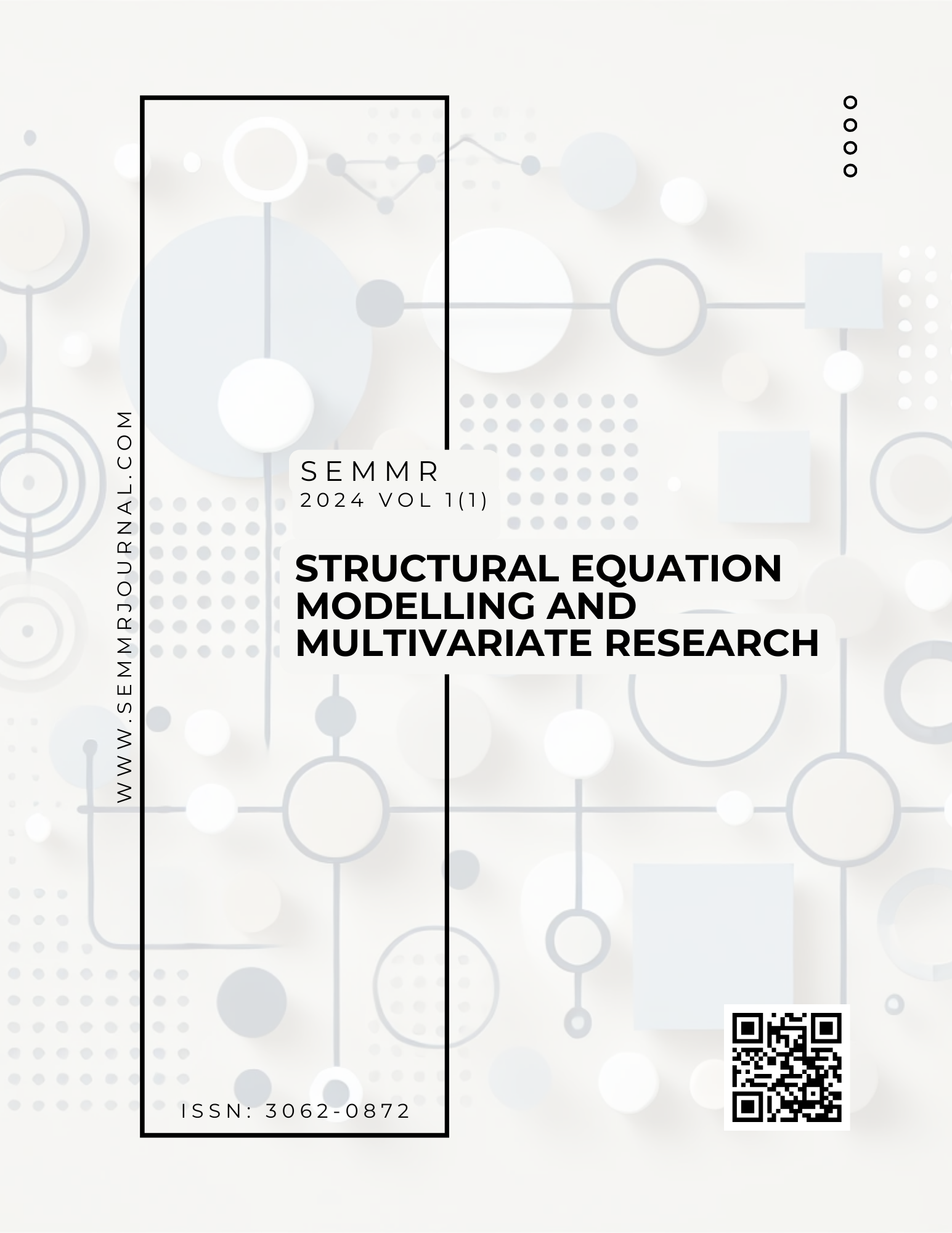Determinants of Online Shopping Intentions During the Pandemic
DOI:
https://doi.org/10.5281/zenodo.14357447Keywords:
structural equation modeling, COVID-19 Pandemic, Online Shopping intentions, Behavioural Control, IntentionAbstract
This study analyses the key factors influencing consumers' online shopping intentions in Türkiye during the COVID-19 pandemic using Structural Equation Modelling (SEM). The digital transformation, made necessary by the pandemic, has profoundly altered consumer habits. Perceived usefulness, perceived ease of use, and perceived behavioural control are examined as the primary factors shaping attitudes and intentions towards online shopping. The findings of the study reveal that perceived ease of use and perceived usefulness strongly influence consumer attitudes and shopping intentions. Additionally, perceived behavioural control plays a decisive role in determining intention. Conducted in Türkiye, this study provides valuable insights into the transition of online shopping from a mandatory option to a permanent shopping norm during the pandemic. The findings will serve as a significant guide in shaping future digital commerce strategies.
Structural Equation Modelling
COVID-19 Pandemic
Online Shopping intentions
Behavioural Control
Intention
Downloads
References
Adam, M., Ibrahim, M., Idris, S., Saputra, J., & Putra, T. (2022). An investigation of e-marketing and its effect on the consumer buying decision during covid-19 pandemic in Aceh Province, Indonesia: A mediating role of perceived risk. International Journal of Data and Network Science, 6(1), 115-126. https://doi.org/10.5267/j.ijdns.2021.9.016
Ajzen, I. (1991). The theory of planned behavior. Organizational Behavior and Human Decision Processes, 50(2), 179-211. https://doi.org/10.1016/0749-5978(91)90020-T
Anderson, J. C., & Gerbing, D. W. (1988). Structural equation modeling in practice: A review and recommended two-step approach. Psychological bulletin, 103(3), 411. https://doi.org/10.1037/0033-2909.103.3.411
Bagozzi, R. P., & Yi, Y. (1988). On the evaluation of structural equation models. Journal of the Academy of Marketing Science, 16(1), 74-94. https://doi.org/10.1007/BF02723327
Bayır, T. (2021). Changing Consumer Preferences in the New Digital World with Coronavirus (COVID-19). OPUS International Journal of Society Researches, 17(Pandemic Special Issue), 3621-3640. https://doi.org/10.26466/opus.829515
Bentler, P. M., & Bonett, D. G. (1980). Significance tests and goodness of fit in the analysis of covariance structures. Psychological Bulletin, 88(3), 588-606. https://doi.org/10.1037/0033-2909.88.3.588
Byrne, B.M. (2011). Structural Equation Modeling with Mplus: Basic Concepts, Applications, and Programming (1st ed.). Routledge. https://doi.org/10.4324/9780203807644
Bytyqi, Q. (2022). The impact of the covid-19 pandemic on online shopping: an empirical research with kosovar consumers. Prizren Social Science Journal, 6(3), 26-37. https://doi.org/10.32936/pssj.v6i3.380
Cetină, I., Vinerean, S., Opreana, A., Rădulescu, V., Goldbach, D., & Radulian, A. (2022). The impact of the COVID-19 pandemic on consumers’ online shopping behaviour – an empirical model. Economic Computation and Economic Cybernetics Studies and Research, 56(1), 41-55. https://doi.org/10.24818/18423264/56.1.22.03
Colaço, R., & de Abreu e Silva, J. (2023). Interactions between online shopping, in-store shopping and weekly travel behavior: An analysis before and in the aftermath of COVID-19 in Lisbon, Portugal. Transportation Research Record, 1-13. https://doi.org/10.1177/03611981231194628
Cronbach, L. J. (1951). Coefficient alpha and the internal structure of tests. Psychometrika, 16(3), 297-334. https://doi.org/10.1007/BF02310555
Davis, F. D. (1989). Perceived usefulness, perceived ease of use, and user acceptance of information technology. MIS Quarterly, 13(3), 319-340. https://doi.org/10.2307/249008
DeVellis, R. F. (2016). Scale development: Theory and applications (4th ed.). SAGE Publications.
Etikan, I., Musa, S. A., & Alkassim, R. S. (2016). Comparison of convenience sampling and purposive sampling. American Journal of Theoretical and Applied Statistics, 5(1), 1-4. https://doi.org/10.11648/j.ajtas.20160501.11
Faqih, K. M. (2011, November). Integrating perceived risk and trust with technology acceptance model: An empirical assessment of customers' acceptance of online shopping in Jordan. In 2011 international conference on research and innovation in information systems (pp. 1-5). IEEE. https://doi.org/10.1109/ICRIIS.2011.6125686
Fornell, C., & Larcker, D. F. (1981). Evaluating structural equation models with unobservable variables and measurement error. Journal of Marketing Research, 18(1), 39-50. https://doi.org/10.1177/002224378101800104
George, D., & Mallery, P. (2003). SPSS for Windows step by step: A simple guide and reference 11.0 update (4th ed.). Allyn & Bacon.
Hair, J. F., Black, W. C., Babin, B. J., Anderson, R. E., & Tatham, R. L. (1998). Multivariate data analysis (5th ed.). Prentice-Hall.
Hayduk, L. A. (1987). Structural equation modeling with LISREL: Essentials and advances. Johns Hopkins University Press.
Johanson, G. A., & Brooks, G. P. (2010). Initial scale development: sample size for pilot studies. Educational and psychological measurement, 70(3), 394-400. https://doi.org/10.1177/0013164409355692
Jöreskog, K. G., & Sörbom, D. (1996). LISREL 8: User's reference guide. Scientific Software International.
Kline, R. B. (2015). Principles and practice of structural equation modeling (4th ed.). Guilford Press.
Mardia, K. V. (1970). Measures of multivariate skewness and kurtosis with applications. Biometrika, 57(3), 519-530. https://doi.org/10.1093/biomet/57.3.519
McLean, G., & Wilson, A. (2019). Shopping in the digital world: Examining customer engagement through augmented reality mobile applications. Computers in human behavior, 101, 210-224. https://doi.org/10.1016/j.chb.2019.07.002
Mehrolia, S., Alagarsamy, S., & Solaikutty, V. M. (2020). Customers' response to online food delivery services during COVID-19 outbreak using binary logistic regression. Journal of Retailing and Consumer Services, 60, 102-114. https://doi.org/10.1111/ijcs.12630
Nunnally, J. C. (1978). Psychometric theory (2nd ed.). McGraw-Hill.
Schermelleh-Engel, K., & Moosbrugger, H. (2003). Evaluating the fit of structural equation models: Tests of significance and descriptive goodness-of-fit measures. Methods of Psychological Research Online, 8(2), 23-74.
Tabachnick, B. G., & Fidell, L. S. (2013). Using multivariate statistics (6th ed.). Pearson.
Telli, G., Aydın, S., & Gezmişoğlu Şen, D. (2021). A Study on the Attitude and Purchase Intention towards Online Second-Hand Products Shopping during COVID-19. Aksaray Üniversitesi İktisadi ve İdari Bilimler Fakültesi Dergisi, 13(2), 11-22. https://doi.org/10.52791/aksarayiibd.870124
Türkiye İstatistik Kurumu (TÜİK). (2020). Online Shopping Data. https://www.tuik.gov.tr/
Öztürk, O. (2023). Factors affecting online service quality and comparison of online service quality perceptions before and during the covid-19 pandemic. Yönetim Bilimleri Dergisi, 21(50), 987-1016. https://doi.org/10.35408/comuybd.1224492
We Are Social. (2021). Digital 2021: Turkey. We Are Social and Hootsuite. https://wearesocial.com/digital-2021
Downloads
Published
How to Cite
Issue
Section
License
Copyright (c) 2024 Nur Bedia Özdemir, Murat Doğan

This work is licensed under a Creative Commons Attribution 4.0 International License.




